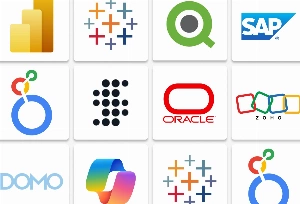What is Offshoring?
Outsourcing services are divided into 3 main branches:
- Onshore outsourcing is partnering with a vendor from another company but in the same country. It gives an opportunity to get required services without hiring an in-house team.
- Nearshore development is choosing a vendor in a nearby country. That means delegating tasks to a team that functions in a similar time zone and is geographically close to your country. It allows you to hire technical experts without employing an in-house team.
- Offshore outsourcing is hiring a vendor from a distant country, most frequently, from a different part of the world. Offshore outsourcing allows you to partner with geographically distant ventures and saves big sums of money.
How to Get Maximum Productivity From the Offshore Team
# Lay a Solid Foundation
If you decide to fish, make sure you catch the best fish. Check the company’s profile on independent platforms such as Clutch, GoodFirms, etc., where you can find verified reviews from customers and learn more about their core expertise and projects.
Conduct a technical interview with developers and check their English proficiency skills as it will directly influence your communication and dynamics of development.
# Choose a Proper Cooperation Model
IT outsourcing vendors offer different cooperation models with different pricing. Usually, you can choose one of three main pricing models that fit your business requirements the most:
- A dedicated development team is the most frequently chosen model of cooperation due to its cost-effectiveness. You hire a team of experts that work exclusively for your project for a set period of time and regularly update you about project progress. This cooperation model is significantly cheaper compared to the two others, as you get a wider range of services for a longer period of time.
- Fixed Price is suitable for smaller and shorter-term projects. As you sign a contract with your vendor, you define a scope of work to be done, a fixed price, and a period of time for project delivery. When the time is up, the development team no longer makes any changes to the product.
- Time and Material is a good option if it's hard to estimate the amount of work to be done, services you need, and the amount of time required to complete the task. You just discuss quota for different types of services and pay for the amount of work that is done.
# Set Clear Delivery Expectations
The expectation-setting phase is the main prerequisite for successful and on-time product delivery. You must be transparent about your perspectives for quality, team size, and services you need to outsource for your product in order to avoid unforeseen costs and exclude possible delays. Prepare a clear agreement that outlines rules regarding working management and invoicing, defined means and regularity of communication, and progress tracking tools.
# Hire a Project Manager
As you won’t be able to supervise the team in person, you need someone to do it instead of you. This person is a project manager who will not only organize and monitor the development process but suggest powerful solutions and tactics based on their experience managing other projects. Frequently clients don’t have expertise in techy things, that’s why the existence of such a position significantly simplifies the workflow. A project manager is a kind of mediator between the client and the development team who speaks the languages of both.
# Evaluate the Progress and Provide Instant Feedback
While offshoring presupposes mutual understanding and trust, there is still a need for progress evaluation on the client side. You can use different time tracking software as well as project tracking tools to evaluate how much time the offshore team spends per task. Some of the most popular tools for progress tracking include:
# Foster communication
Communication is a strong pillar of successful outsourcing software development. Unfortunately, it’s also its Achilles’ heel. Living in different countries and sometimes different parts of the world with your vendor doesn’t usually enhance your cooperation. So, it’s important to choose a vendor with whom at least 1 or 2 of your working hours coincide. How to improve communication with offshore teams? Visualize the time difference using, for example, World clock meeting planner, and arrange communication channels and regular time for meetings with the team.
Alongside time differences come language and cultural barriers. The National Outsourcing Association in the UK states that 75% of their survey respondents said that they “would take more account of culture next time”. Evaluate if there is any difference in organizational culture between you and your vendor, do they share the same value your company does, and don’t forget to check the English level of the dedicated team. 




_1764586939-small.webp)
